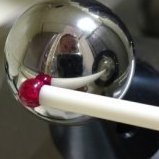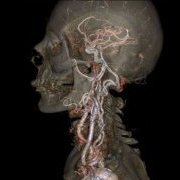Leaderboard
Popular Content
Showing content with the highest reputation on 12/27/2021 in all areas
-
I would take a good machine over a CMM 100% of the time. From my experience CMMs don't produce revenue, they open doors to aerospace work and for that they are a necessity. As a new shop you would need revenue above all else. Doing aerospace work on a 3-axis VMC would not be fun at all and it would be hard to turn a profit with a shop with ANY employees. Due to the documentation and quality requirements of aerospace work the shop would need to be VERY efficient in other areas to make up for this overhead. My shop has one person on quality full time and three full time people in inspection so in a shop with 11 employees those are the resources going to these areas. This pretty much means multi-axis machining of tight tolerance parts because that is where the $$$ are. If we had only low end VMCs we wouldn't be able to stay in business with aerospace. You could only really do it as a one man operation but this is just my opinion and I could be wrong. Rather than invest a nickle in a CMM, spend the $$$ on a nice 5-axis machine that will be the cornerstone of your shop. Use the revenue that produces to build out from there. My $.02. Employee wages are a lot more than a machine payment so you would want to put the pieces in place that will not only make the machine payment but also produces the revenue to support employees. Years ago one of my employees demanded a raise to $34/hr (20 year old kid with 3 years experience) and I was a little offended but I did give him a clear path to get there over the course of six months. That included taking courses in GD&T and learning to run and program the CMM, mostly on his own time but 100% on our dime. He wasn't willing to do those things and a few weeks later we parted ways and he did ultimately get a job at a shop running VMCs and he started at $25/hr. He has been there a few years and I'd guess he is probably now making $26/hr. That shop isn't running equipment or processes capable of generating the revenue to pay its employees well... The efficiency and throughput of the shop is where your pay comes from, not the boss. Something to think about when job hopping.2 points
-
Ryan will set you up really quickly. Us and our customers have been pretty impressed with Cimco Probing thus far.2 points
-
Hi bd41612, My name is Ryan Mermall, and am the CIMCO Probing product manager here in the states. Can you please send me a email so we can get you set up with a trial? [email protected]2 points
-
i have run into this and have somewhat retrained myself to "click away" as you describe. Still catches me if I try to go to fast. I am not sure if it's a click recognition glitch in MC or a windows click issue, but I believe it to be an issue that could be corrected. I noticed after an operation move there can be a remaining OP selected, but not selected. Doing the click away or just select something else then going back activates it correctly but the selected display does not always mean that the OP is active.1 point
-
Interesting. I will check them out next time I have a need. I've been using some Garr VX-7 tools in titanium, invar, and heat treated stainless. The coating they have on those tools is pretty amazing. Blew every other tool I tried out of the water as far as tool life goes.1 point
-
These tools have through the spindle coolant directly in the flutes and if want to keep long stringy chips under control for roughing then you are already using serrated edges. It might look like old a school rougher, but trust me the 4th flute in Aluminum with the TSP is a game changer. Want to bury this tool in a full slotting application give it a shot. Want to start thinking about 60% step over at 100% DOC using HST toolpaths this will be tool I will give it a try with. We all think only 3 flute for clearing out chips, but these tools with the polished gullet areas are impressive to watch cut. The TSP ability right at the cutting edges is the real difference. With TSP holders we get it above the tool, but with these it is in 2 places right at the cutting edges and at the tip.1 point
-
This reads a lot like someone who's Fanuc experience is with 18i/15i. Mike1 point
-
Ron, the machine I work on most often, does have high pressure, through spindle coolant (1200psi) and most of my tool run in Lyndex SK collets, and I almost always run HP coolant through the collet. Except of course when the cutting tool is equipped with coolant holes, then I'll use a sealed collet, or other appropriate method.1 point
-
No but you can trick optirough into a 2d path with the step down set to below your depth and no up cuts and steep shallow.1 point
-
Also, on both the "FROM" Point, and on the "TO" Point, you can use "Relative Positioning". What is this you may rightly ask? Whenever you are prompted to "Select a Point" in Mastercam, there is a secret function available, called "Relative Positioning". Hold down the SHIFT key, and then click on any "Autocursor Position". Mastercam will now launch an "inline function", that temporarily suspends the "Transform" (or whatever other function you are using), and puts you into a mode where "you can shift or move relative from a 'known point'. In newer versions of Mastercam (like 2022), you are presented with a Gnomon. This is a Coordinate System with functions attached. To "move a relative distance" from the known point, you click on the "spindle" of one of the Gnomon Axes. If you want to shift "0.35" to the X+ direction, you'd start by clicking the X-Axis Spindle. This puts you in a "dynamic ruler mode", and as you move the Gnomon +- along the active axis, you'll see the distance change on the "tape measure" or "scale". If you are in the dynamic ruler mode, and then "scroll the mouse wheel forwards or backwards" (with your cursor positioned on the ruler, you'll see the hash mark scale values change. The ruler is "nice", but the snap positions are typically not even number increments. (they are fraction based). But, there is another trick you can do here. Pay attention as you move the Gnomon to "which way is positive/negative" as you move your mouse. Now, just start typing a value. If you want to go negative, type [-.35]. If you want to go positive, just omit the negative sign when you type. [.35]. (I do like to type the Zero, just force of habit, so for me it is -0.35 or 0.35, or whatever positive or negative amount you want to move relative to that point. It can be any positive or negative decimal value.) Now, once you've typed in the amount you want to move, press [ENTER] [ENTER]. (Press Enter Twice) The first Enter press will "lock in the decimal number value" to the data entry field. The 2nd press will actually "accept the input", and your Gnomon will update to that "exact relative distance". After moving one direction (say along X), you can then pick a different axis spindle on the Gnomon (say Y), and make a 2nd relative position move. This "Relative Positioning Function" can be really useful in many different situations. Anywhere that Mastercam is asking you to "select a position" (some XYZ coordinate value in 3D Space), you can use this function to "shift relative to the point I'm selecting".1 point
-
One thing that I found out by making the mistake of accidentally moving operations around. Make sure that you have the operation(s) that you want to move highlighted and nothing else before dragging. I've had an operation that I had no intention of moving highlighted, right clicked on the operation that I did want to move, drag and let go only to figure out that it never actually selected the operation that I right clicked on and ended up moving the operation that was originally highlighted. I thought that I was going nuts or that there was a bug until someone from MC pointed this out to me. Now I'm super careful to make sure that everything I need to move is highlighted before dragging anything around.1 point
-
To build on this a bit, although technically you COULD use Convert to 5 axis on an opti, but the problem you have is that it won't be controlling whether you tilt into stock that will be removed in the future, i.e., it'll only be tilting to avoid drive & check surfaces, not the material that exists at that particular moment in cut. That's why it's not enabled like the other Finishing toolpaths. The big difference is that Multiaxis Roughing (2020 or before, in 2021 it's now the "Multiaxis Pocketing" toolpath with additional capabilities) is always normal to a floor, meaning that it won't support undercuts (in 2020 or before). Because it's always normal to the floor, you know where all the previous material was removed and there's no surprises about the tool contacting stock. In 2021, this problem is solved by only allowing undercuts with an offset pattern (not Dynamic), so you always know which way you came from. If you do want to be successful with Multiaxis Roughing, I highly recommend using stock (so it knows where to remove material) and to make a single floor surface so it will always have a logical direction to be normal to.1 point
Join us!
eMastercam - your online source for all things Mastercam.
Together, we are the strongest Mastercam community on the web with over 56,000 members, and our online store offers a wide selection of training materials for all applications and skill levels.










